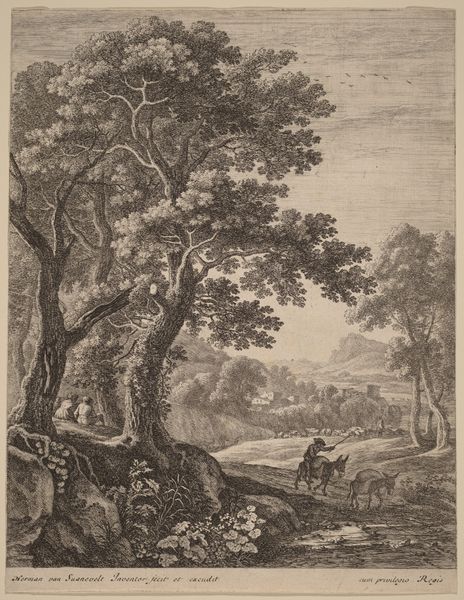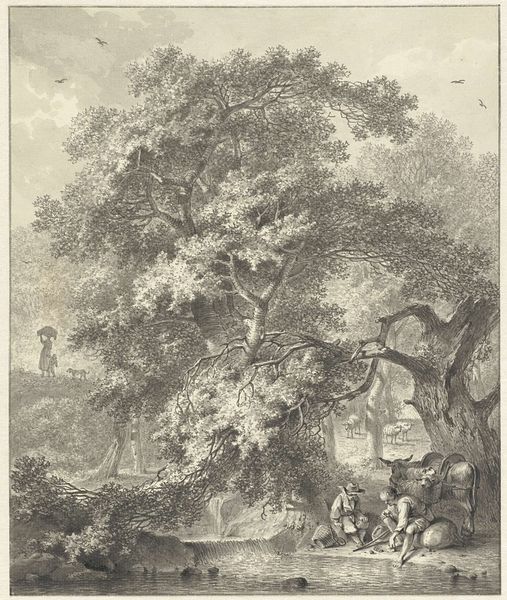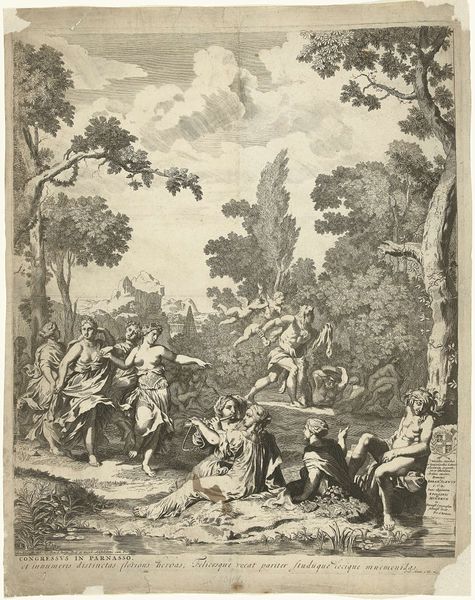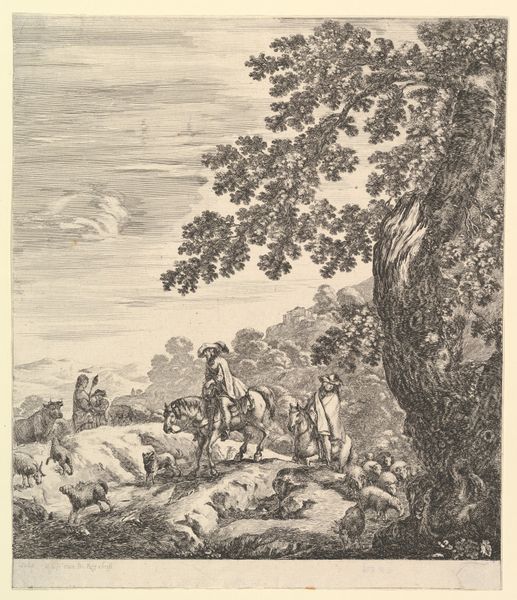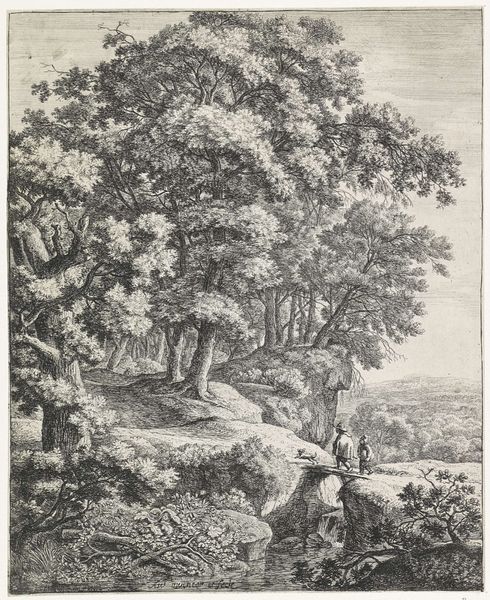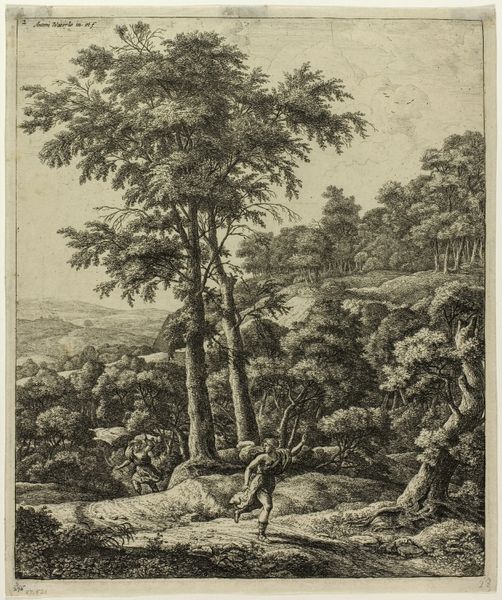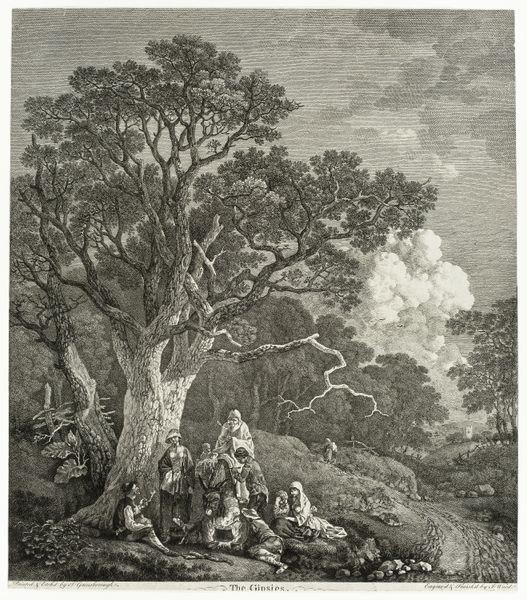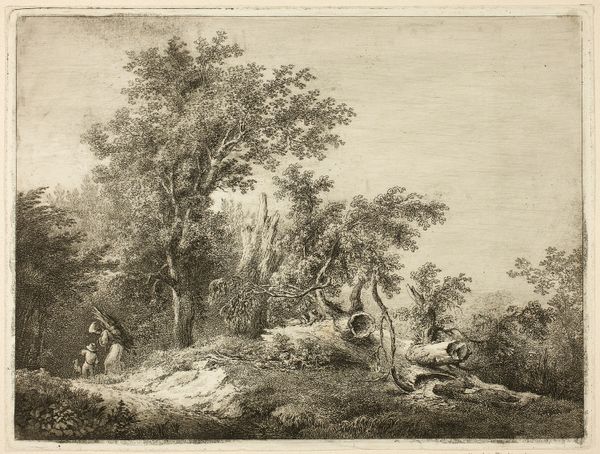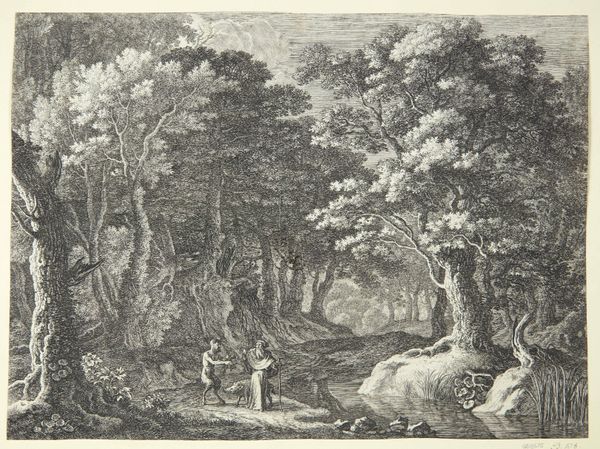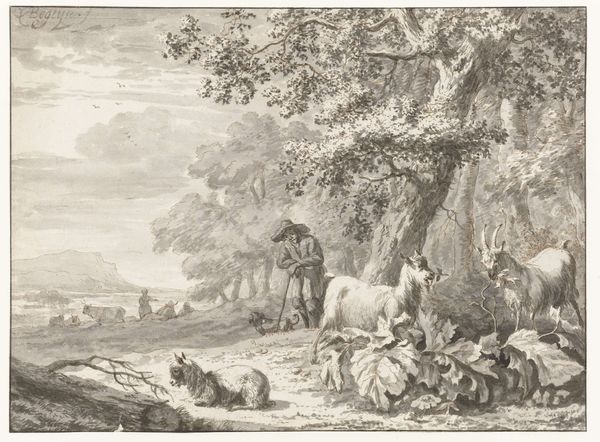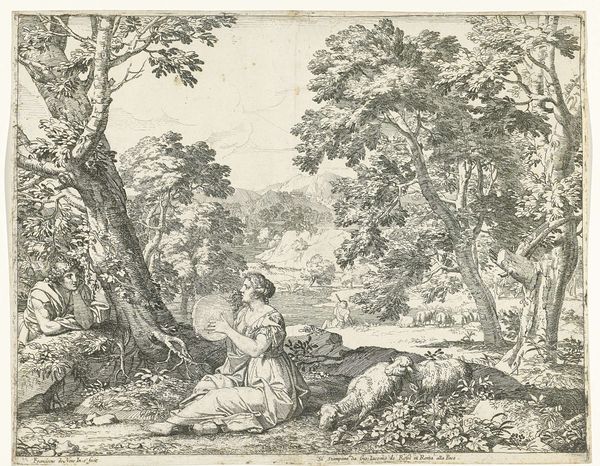
drawing, print, etching, paper
#
landscape illustration sketch
#
drawing
#
germany
# print
#
etching
#
pencil sketch
#
landscape
#
paper
#
romanticism
#
pen-ink sketch
#
nature environment
#
genre-painting
#
pencil art
Dimensions: 213 × 187 mm (image); 280 × 230 mm (plate); 344 × 466 mm (sheet)
Copyright: Public Domain
Curator: What a beautiful etching! This is Adrian Ludwig Richter's "Grotta Ferrata," created in 1832. Editor: It feels… nostalgic? Like a perfectly captured memory, a bit hazy and sweet. The light is soft, and everyone looks so content gathered around that fountain. Curator: Absolutely. Richter, as a leading figure of German Romanticism, often explored the intersection of nature and humanity. This piece exemplifies the period's preoccupation with idealized rural life. We should also consider Germany's own internal reckonings with nationalism and folklore from that period, especially considering their relatively new national identity. Editor: It definitely brings to mind a simpler time. Look at the detail in the foliage. The gnarled branches of that central tree... almost seem protective of the figures below. It's also interesting how much detail is conveyed using what looks like minimal cross-hatching and varied line work to depict the shading across the composition. Did many artists during this period experiment so masterfully with etching, and this balance of shadow and light? Curator: Many artists certainly created art works using a combination of etching and other intaglio techniques, but it is difficult to name one who approached rendering tone and light in nature using just line with such mastery. The setting itself, Grotta Ferrata near Rome, holds layers of history as well. Consider it as both a physical place but also an imaginative space where the past and present can coexist. Editor: Right, the narrative power! It is really fascinating. Curator: This etching isn't simply a scene. It's a lens through which we can examine 19th-century Europe's construction and glorification of rustic, timeless ideals. Editor: A lens offering a filtered view, no doubt. But still, the artistry… It feels so genuine. I feel as though I've seen this moment unfold somehow, which brings the viewer closer to this timeless idea you are discussing, even if briefly. Curator: Precisely. This interplay of art and history, memory and representation, that gives works like "Grotta Ferrata" their lasting significance and, frankly, beauty. Editor: For me, it’s a reminder to find those pockets of serenity. Like that quiet scene captured in the etching, wherever and whenever they might appear.
Comments
No comments
Be the first to comment and join the conversation on the ultimate creative platform.
